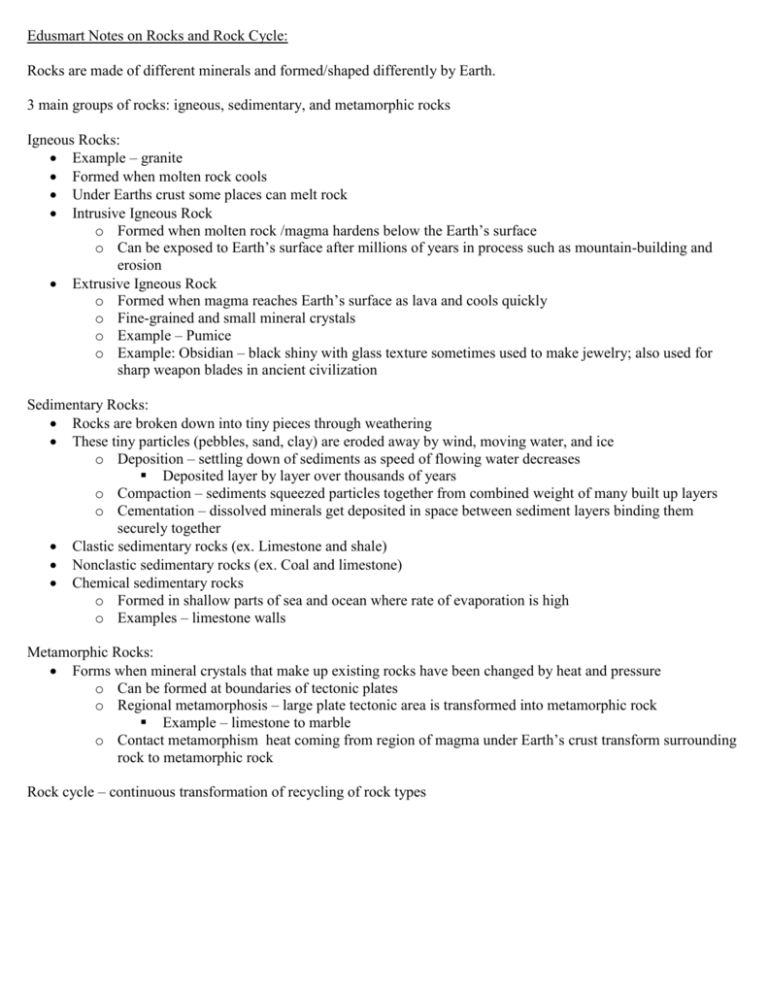Edusmart Notes on Rocks and Rock Cycle:
advertisement

Edusmart Notes on Rocks and Rock Cycle: Rocks are made of different minerals and formed/shaped differently by Earth. 3 main groups of rocks: igneous, sedimentary, and metamorphic rocks Igneous Rocks: Example – granite Formed when molten rock cools Under Earths crust some places can melt rock Intrusive Igneous Rock o Formed when molten rock /magma hardens below the Earth’s surface o Can be exposed to Earth’s surface after millions of years in process such as mountain-building and erosion Extrusive Igneous Rock o Formed when magma reaches Earth’s surface as lava and cools quickly o Fine-grained and small mineral crystals o Example – Pumice o Example: Obsidian – black shiny with glass texture sometimes used to make jewelry; also used for sharp weapon blades in ancient civilization Sedimentary Rocks: Rocks are broken down into tiny pieces through weathering These tiny particles (pebbles, sand, clay) are eroded away by wind, moving water, and ice o Deposition – settling down of sediments as speed of flowing water decreases Deposited layer by layer over thousands of years o Compaction – sediments squeezed particles together from combined weight of many built up layers o Cementation – dissolved minerals get deposited in space between sediment layers binding them securely together Clastic sedimentary rocks (ex. Limestone and shale) Nonclastic sedimentary rocks (ex. Coal and limestone) Chemical sedimentary rocks o Formed in shallow parts of sea and ocean where rate of evaporation is high o Examples – limestone walls Metamorphic Rocks: Forms when mineral crystals that make up existing rocks have been changed by heat and pressure o Can be formed at boundaries of tectonic plates o Regional metamorphosis – large plate tectonic area is transformed into metamorphic rock Example – limestone to marble o Contact metamorphism heat coming from region of magma under Earth’s crust transform surrounding rock to metamorphic rock Rock cycle – continuous transformation of recycling of rock types







